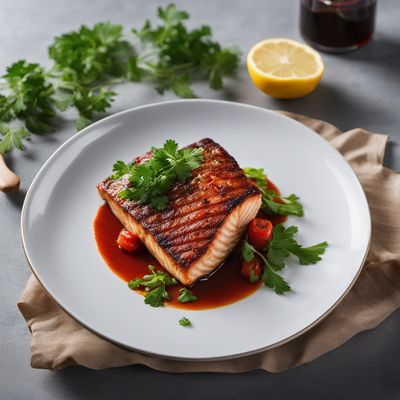
Ingredient
Hake, dried
The Ocean's Delicacy
Dried hake is a type of fish that has been preserved through the process of dehydration. It is commonly used in Mediterranean and Latin American cuisines and is known for its delicate flavor and firm texture. Dried hake has a pale white color and a slightly salty taste, reminiscent of the sea. It can be rehydrated and used in soups, stews, or as a topping for salads and pasta dishes.
Origins and history
Hake is a popular fish species found in the Atlantic and Pacific Oceans. It has been consumed for centuries in coastal regions around the world and is particularly prevalent in countries such as Spain, Portugal, and South American countries. Drying hake is a traditional preservation method that allows the fish to be stored for extended periods without refrigeration.
Nutritional information
Dried hake is a good source of lean protein and essential omega-3 fatty acids. It is also low in calories and fat, making it a healthy choice for individuals looking to maintain a balanced diet. Additionally, it contains significant amounts of vitamins and minerals, including vitamin B12, selenium, and phosphorus.
Allergens
Dried hake may contain fish allergens and should be avoided by individuals with fish allergies.
How to select
When selecting dried hake, look for a product that is free from any signs of mold, discoloration, or insect damage. It should have a firm texture and a pale white color. Additionally, choose a brand that is sustainably sourced to support responsible fishing practices.
Storage recommendations
To maintain the freshness and quality of dried hake, store it in a cool, dry place, away from direct sunlight. It is best to keep it in an airtight container or a sealed plastic bag to prevent moisture absorption and maintain its flavor. Properly stored dried hake can last for several months.
How to produce
Drying hake is a traditional preservation method that can be done at home with the right equipment. It involves cleaning and filleting the fish, removing the bones, and then placing the fillets in a dehydrator or an oven set to a low temperature. The fish is dried until it becomes firm and brittle, which usually takes several hours. Once dried, the hake can be stored in an airtight container for future use.
Preparation tips
Dried hake can be rehydrated by soaking it in water or broth for about 30 minutes to 1 hour, depending on the thickness of the fish. Once rehydrated, it can be used in a variety of dishes such as soups, stews, or as a topping for salads and pasta. It can also be pan-fried or grilled for a crispy texture and served with a squeeze of lemon juice for added freshness.
Culinary uses
Dried hake is commonly used in Mediterranean and Latin American cuisines. It is often used in traditional recipes such as Spanish bacalao dishes, Brazilian moqueca, or Portuguese fish stews. It can also be used as a topping for salads or pasta dishes, adding a savory and slightly salty flavor to the dish.
Availability
Dried hake is commonly available in coastal regions and countries where hake is a native fish species. It can be found in local fish markets, specialty seafood stores, or online retailers that offer dried fish products.
More ingredients from this category
Recipes using Hake, dried

Madrid-style Fish Soup
Maravillosa Sopa de Pescado Madrileña (Wonderful Madrid-style Fish Soup)

Sopa Coàda with a Twist
Catalan Comfort: A Modern Twist on Sopa Coàda

African-inspired Grilled Hake Fillets in Wine Sauce
Savory African Delight: Grilled Hake Fillets in Wine Sauce

Kokotxas a la Vizcaína
Delicious Basque-Style Kokotxas: A Seafood Delight

Balearic-style Hake with Potatoes and Peppers
Mediterranean Delight: Balearic Hake with Potatoes and Peppers

Creamy Croatian Fish Soup
Seafood Delight: Creamy Croatian Fish Soup

Galician-style Hake with Potatoes
Savor the Flavors of Galicia: Galician-style Hake with Creamy Potatoes